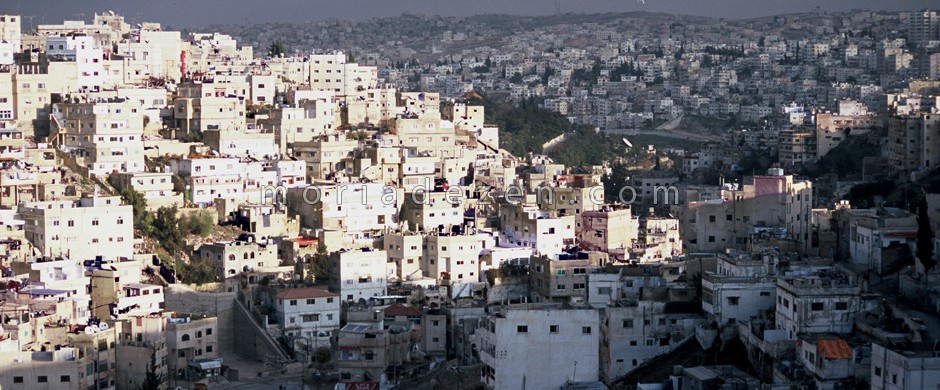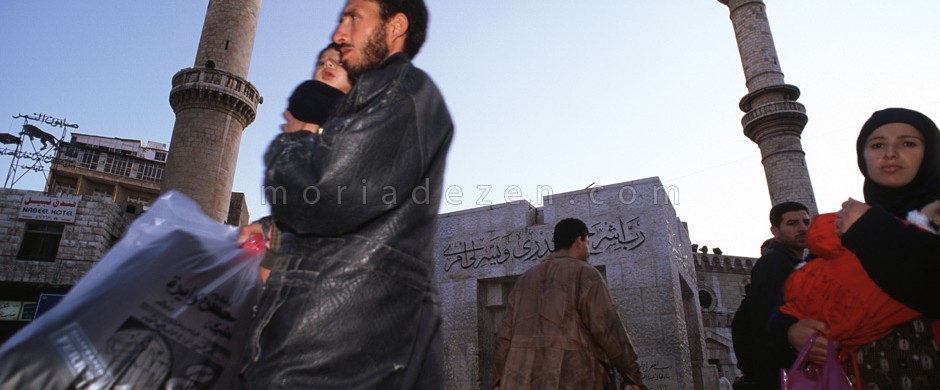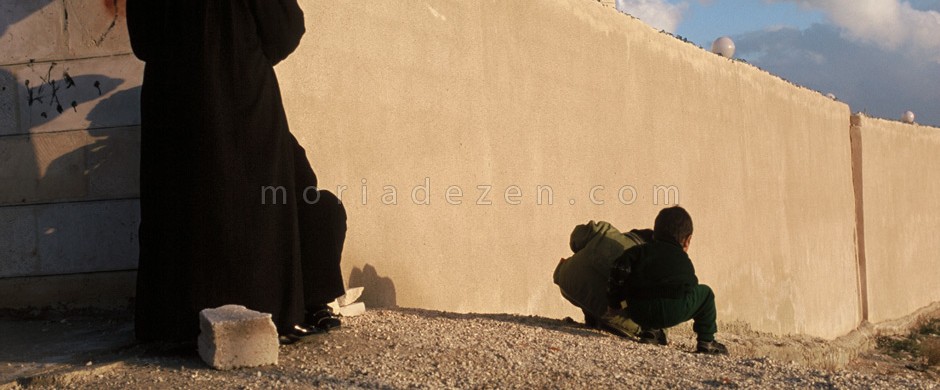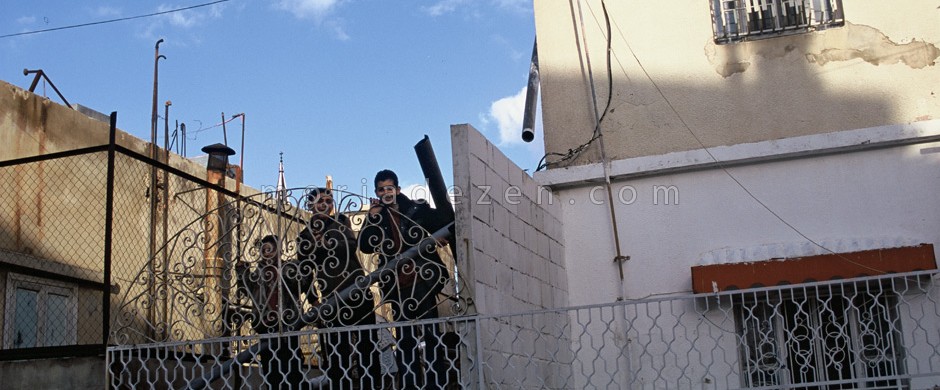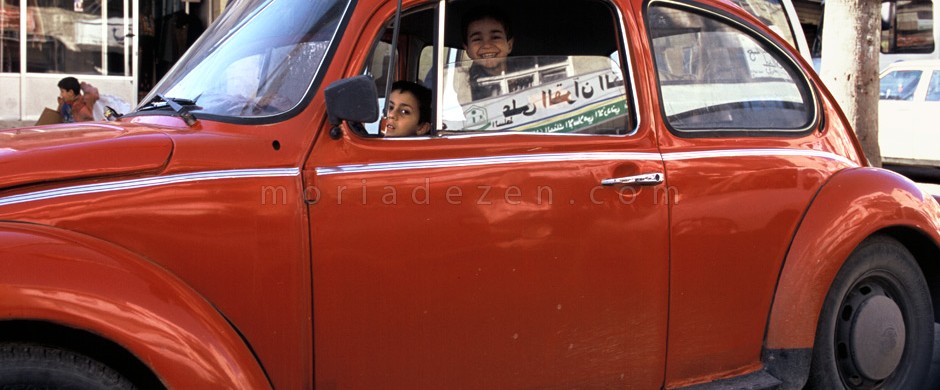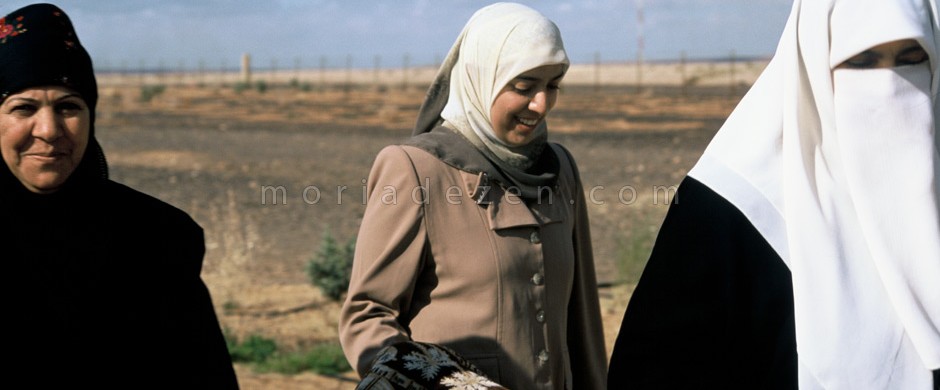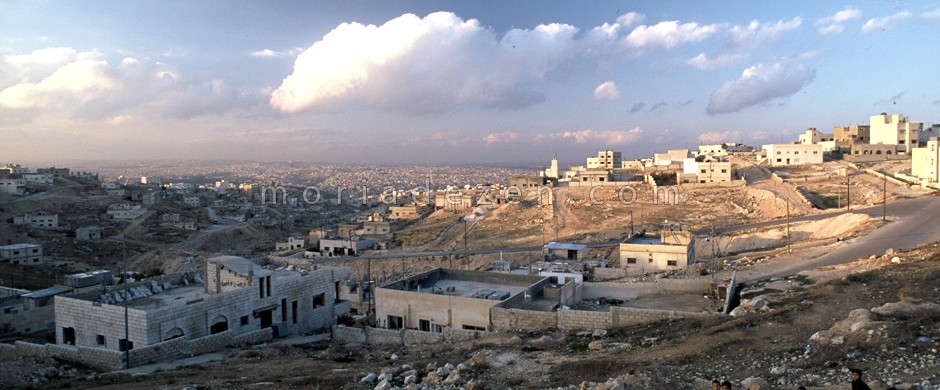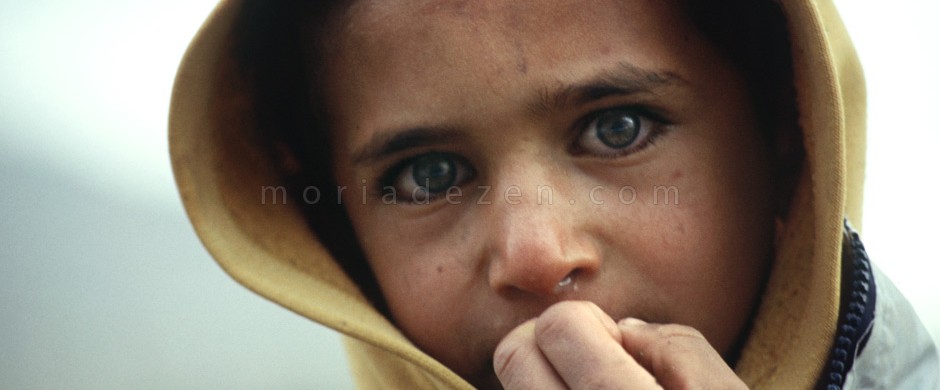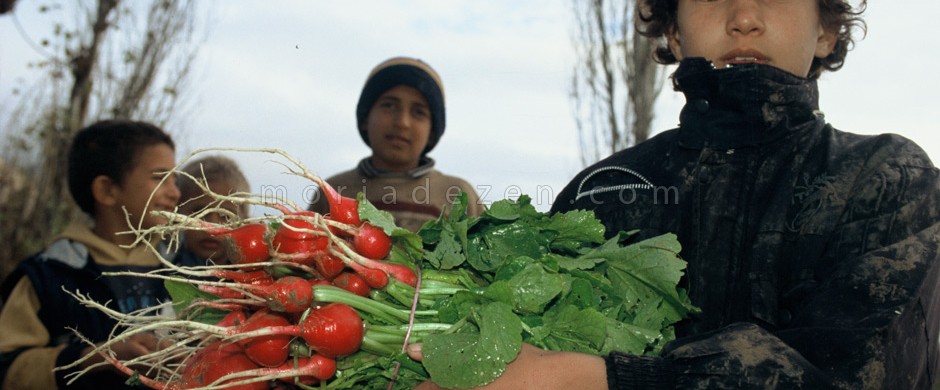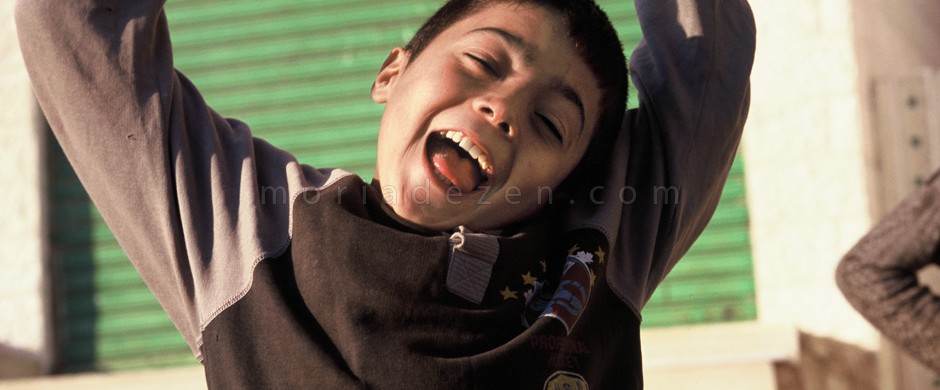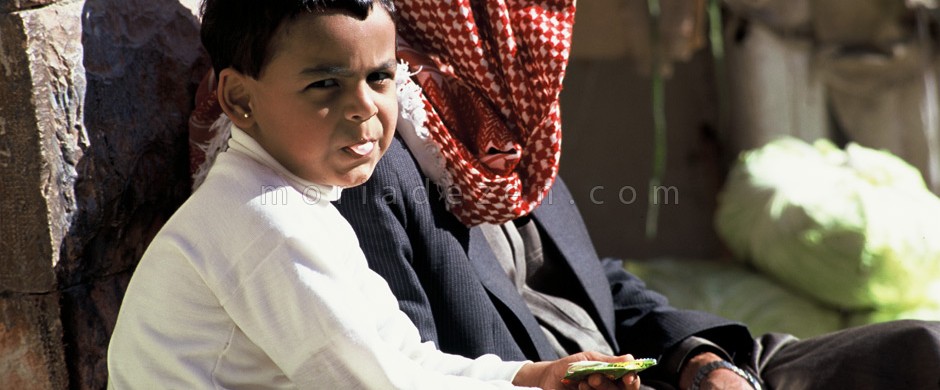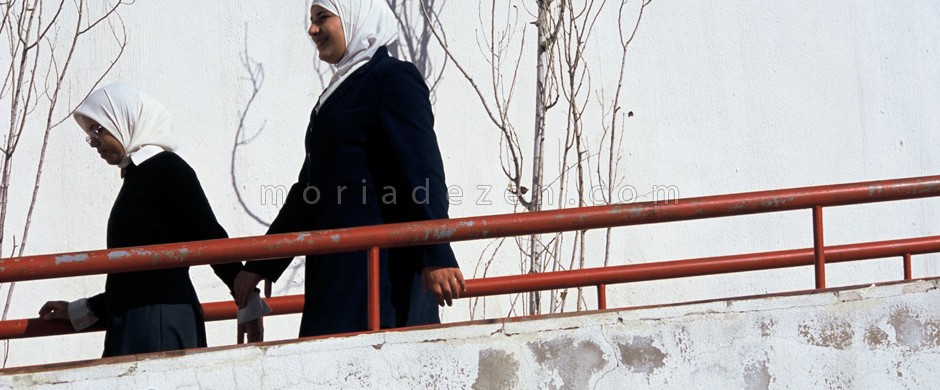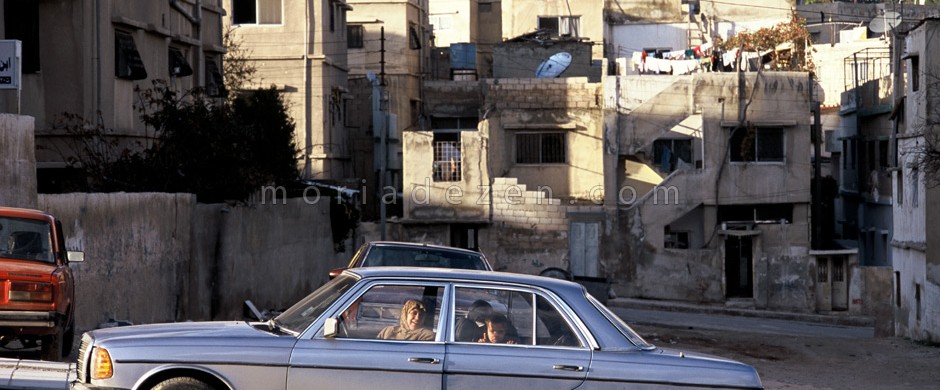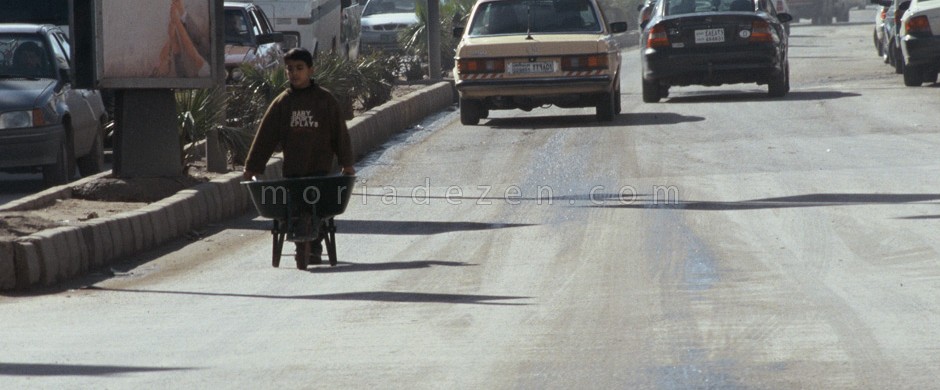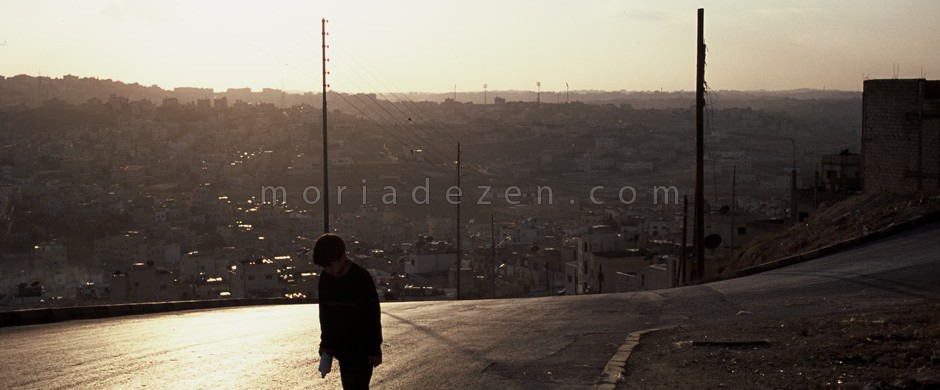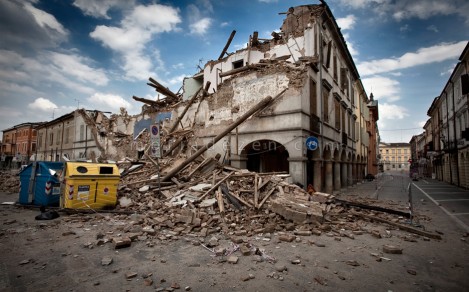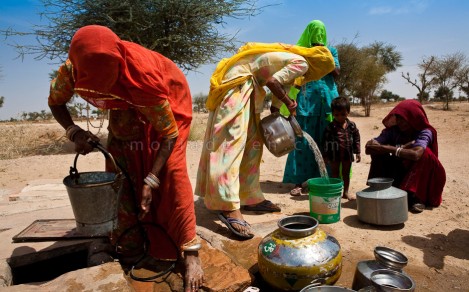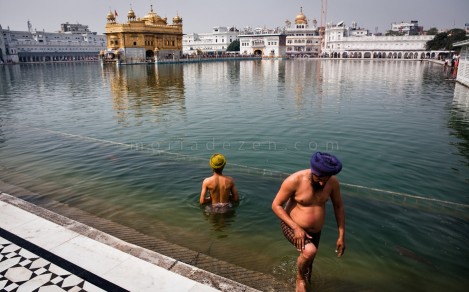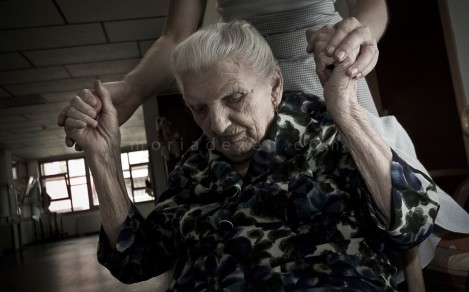I bambini di Amman
English
The horizons of Amman are immense tapestry in which you can loose your gaze. You realize only after few seconds, when you miss, that your breath is left suspended somewhere down over there and you have to catch it again. Myriads of buildings and houses cover thickly the nineteen jebel (hills) on which Amman is built and, in the distance, they look like small pieces of a large mosaic teeming with life. Located in the north of Transjordan upland, Amman is the capital of the Hashemite Kingdom of Jordan, a country just 450 km long, 80% of which deserted, no bigger than a third of the size of Italy. Despite the unstable and precarious economy – a high rate of immigration, unemployment, poverty, nepotism and corruption make it a country with one of the highest per capita debt in the world – and the heavy economic impact of the Gulf War of 1990-91, over the last sixty years the country has significantly changed. Jordan can be considered the most moderate Arab country among the Middle East countries. On the streets you see few women wearing the burqa, many other instead wear Western clothes covering just their heads and part of the bust with the hijab (a one tint veil) exposing the face or part of it. While still following rules and customs of an almost entirely Muslim society, the jeans, the sneakers and accessories they wear, reveal a curious heart already opened to new gestures and contaminations. The movement of vehicles, cars, scooters, people and activities is incessant, deafening. Five times during the day you can hear the voice of a muezzin coming from the four cardinal points to remember the duty of Islamic prayer; amplified by loudspeakers on minarets, it collects and combines the vastness of the city in a dimension that seems, for a moment, more intimate and compact. Amman is a city of stark cultural, social, architectural contrasts; with its incessant noise, its strong smells, its intense flavors, its saturated colors – something that characterizes the entire North Africa – it gets inside you in a breath without you have some time to assimilate previous experiences.
And then there are the children of Amman. Many. Everywhere. On the streets once they see you they chase you, they come out of their homes to find you; a thing that, ironically, you almost get used when traveling in Africa. Instead you can not get used to the rather bold and disarming sincerity of their smile, or their open inquisitive look that screech against your speed and the distance of the perspective from which you measure. As it always happens, or nearly so, in these contexts, often poor and messy – not always if observed in their identitary dimension, but as such if framed in global geopolitical perspective – they, the children, who have little or nothing, let you enter in their world with a smile and everything they have: themselves. They approach you without fear or judgment with genuine spontaneity and curiosity.I remind of the beautiful reflection of Wassily Kandinsky on acuity of children, which I think is appropriate to report: “The child ignores the practical functionality as it looks at things with still virgin eyes and has the ability still intact to see things for what they are”. In fact they still have that complete dimension of being that the adult instead gradually, almost unconsciously, hold back until sometimes they suppress it. Through them you can catch a glimpse of the contradictions of a society, the hallmarks of a way of life, the strength and weakness of a culture. In the images that make up Children in Amman I do not intend to delimit or define the cultural contours of a country like Jordan, nor the less the complex Arab world. I ask myself simply as an observer to understand, read, recognize, more closely, those traits which not only distinguish the individuality, character and diversity, but they are important to describe the elements that people have in common regardless of race, culture, country. To do this I have chosen to photograph the children, as they guard, in a more intact and visible way than on adults, the Truth of the human essence. A personal understanding in which the outcome could not disregard from the peculiarities of its context.
MDZ
Italiano
Gli orizzonti di Amman sono immensi arazzi in cui perdere lo sguardo. Ti accorgi solo dopo alcuni istanti, quando ti manca, che il tuo respiro è rimasto sospeso da qualche parte, laggiù, e lo devi andare a riprendere. Miriadi di edifici e case rivestono fittamente le diciannove jebel (colline) sulle quali è costruita Amman e, in lontananza, appaiono come piccoli tasselli di un grande mosaico brulicante di vita. Situata a Nord sull’Altopiano della Transgiordania, Amman è la capitale del Regno Hashemita di Giordania, un paese lungo appena 450 km, l’80% del quale desertico, grande quanto un terzo della superficie dell’Italia. Nonostante l’economia instabile, precaria – un alto tasso d’immigrazione, disoccupazione, povertà, nepotismo e corruzione lo rendono un paese con uno dei debiti pro capite più alti al mondo – e il pesante urto economico della guerra del Golfo del 1990-91, negli ultimi sessant’anni il Paese si è trasformato notevolmente. La Giordania si può considerare lo stato arabo più moderato tra i paesi del Medioriente. Per le strade si vedono poche donne vestire il burqa, molte invece portano vestiti occidentali e si coprono il capo e parte del busto con il hijab (un velo monocolore) lasciando scoperto tutto o parte del volto. Pur seguendo ancora le regole e i costumi di una società quasi interamente musulmana, i jeans, le sneakers e gli accessori che indossano, rivelano un cuore curioso già aperto a nuovi gesti e contaminazioni. Il movimento di auto, veicoli, motorini, persone e cose è incessante, frastornante. Per ben cinque volte durante il giorno la voce dei muezzin si ode dai quattro punti cardinali per ricordare l’obbligo alla preghiera islamica; amplificata dagli altoparlanti dei minareti, raccoglie e unisce la vastità della città in una dimensione che sembra, per un attimo, più intima e compatta. Amman è una città dagli evidenti contrasti culturali, sociali, architettonici e con i suoi rumori incessanti, i suoi odori forti, i suoi sapori intensi, i suoi colori saturi – cosa che caratterizza tutto il Nord-Africa – ti entra dentro tutta d’un fiato senza che tu abbia il tempo di assimilare le sensazioni precedenti.
E poi ci sono i bambini di Amman. Tanti. Ovunque. Per le strade quando ti vedono ti inseguono, escono dalle case e ti cercano. Una cosa a cui, per assurdo, quasi ti abitui viaggiando in Africa; non ti puoi abituare invece alla sincerità sfrontata e disarmante del loro sorriso aperto o del loro sguardo indagatorio che stride con la velocità della tua marcia e la distanza della prospettiva da cui misuri. Come accade sempre, o quasi, in questi contesti, sovente poveri e disordinati – non sempre se osservati nella loro dimensione identitaria, ma tali se inquadrati in un’ottica geopolitica globale – loro, i bambini, che hanno poco o niente ti accolgono col sorriso e tutto quello che hanno: sé stessi. Si avvicinano senza indugio e giudizio con genuina spontaneità e curiosità. Mi torna alla mente la bellissima riflessione di Vassilij Kandinskij sull’acutezza dei bambini, che mi sembra adeguato riportare: “Il bambino ignora la funzionalità pratica in quanto osserva le cose con occhio vergine e possiede ancora intatta la facoltà di vedere le cose per quello che sono”. Loro infatti conservano ancora quella dimensione integra dell’essere che l’adulto invece, via via, quasi inconsapevolmente, trattiene fino talvolta a sopprimerla. Attraverso loro, in nuce, puoi intravedere le contraddizioni della società, i tratti distintivi di un modo di vivere, la forza e la debolezza di una cultura. Nelle immagini che compongono I bambini di Amman non intendo delimitare o definire i contorni culturali di un Paese come la Giordania, né tantomeno del complesso mondo arabo. Mi pongo semplicemente come osservatrice per capire, leggere, riconoscere, più da vicino, quei tratti, che non solo contraddistinguono l’individualità, il carattere e la diversità, ma sono importanti per descriverne gli elementi che accomunano le persone a prescindere da razza, cultura, paese. Per farlo ho scelto di fotografare i bambini in quanto custodiscono, in modo più integro e visibile rispetto agli adulti, la Verità dell’essenza umana. Una personale lettura, questa, in cui l’esito non poteva prescindere dalla peculiarità del suo contesto.
MDZ

